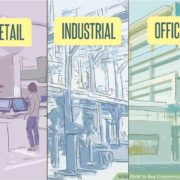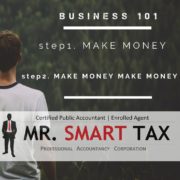Posts
Business Owner and the Coronavirus-Related IRA Distribution
/0 Comments/in Uncategorized /by mrarrachePPP Loan Forgiveness: Is your Business Ready?
/0 Comments/in News /by mrarracheOver the last 12 months, Many Domestic Businesses were able to take advantage of the Paycheck Protection Program, New Tax Deductions and Tax Credits spread over a handful of Federal Acts
- CARES Act §1102 (March 2020)
- PPPHCE Act H.R. 266; P.L. 116-139 (April 2020)
- PPPF Act H.R. 7010; P.L. 116-142 (June 2020)
- PPPE ACt P.L. 116-147 (July 2020)
- ACRR Act as part of Consolidated Appropriations Act H.R. 133 (December 2020)
As the tides begin to turn, hopefully, Businesses will continue to utilize these Federal assistance programs. More specifically for this article, Eligible Businesses may have all or a portion of their PPP loan forgiven if the loan proceeds are used for specified purposes.
Here are some notes and tips for any Business elligible for PPP Loan Forgiveness.
Also download our FREE PPP Loan Forgiveness Checklist.
Reach out to your CPA if you have any questions or want to talk more about your business.
In General
The borrower must apply for loan forgiveness within 10 months after the last day of the “covered period” (discussed later). (SBA 2020-0038) For most borrowers, the end of the covered period will be near the end of 2020. However, there was much confusion because the loan forgiveness forms display an expiration date of October 31, 2020.
In General PPP Loan Forgiveness FAQ #4, the SBA clarified that the expiration date in the upper right corner of the posted PPP loan forgiveness application forms is displayed for purposes of the SBA’s compliance with the Paperwork Reduction Act, and reflects the temporary expiration date for approved use of the forms. This date will be extended, and when approved, the same forms with the new expiration date will be posted.
Furthermore, borrowers may submit a loan forgiveness application any time before the maturity date of the loan, which is either two or five years from loan origination. However, if a borrower does not apply for loan forgiveness within 10 months after the last day of the borrower’s loan forgiveness covered period, loan payments are no longer deferred, and the borrower must begin making payments on the loan. For example, a borrower whose covered period ends on October 30, 2020, has until August 30, 2021, to apply for forgiveness before loan repayment begins.
AMOUNT ELIGIBLE FOR FORGIVENESS
The amount that may be forgiven is equal to the following costs incurred and payments made during
the covered forgiveness period beginning on the date their loan is funded:
• Payroll costs;
• Mortgage interest on a mortgage taken out by the borrower for real or personal
property that was in place prior to February 15, 2020 (not including prepayments);
• Rent on a real or personal property lease taken out before February 15, 2020; and
• Utilities for service established before February 15, 2020. (CARES Act §1106)
To qualify for full forgiveness, at least 60% of the loan proceeds must be used for payroll costs.
However, because the purpose of the program is to help employers maintain the employment of their employees (to protect paychecks), loan forgiveness may be reduced if:
• The employer reduces its number of full-time equivalent employees (FTEEs); or
• The employer reduces any of its employee’s rate of pay.
Eligible expenses expanded
The following expenses are now considered allowable and forgivable uses for PPP loan funds:
- Covered operations expenditures: Payment for any business software or cloud computing service that facilitates any of the following:
- Business operations;
- Product or service delivery;
- The processing, payment, or tracking of payroll expenses;
- Human resources;
- Sales and billing functions; or
- Accounting or tracking of supplies, inventory, records, and expenses;
- Covered property damage costs: Costs related to property damage due to public disturbances that occurred during 2020 that are not covered by insurance or other compensation;
- Covered supplier costs: Amounts paid to a supplier for goods essential to operations of the entity that are made pursuant to a contract, purchase order, or order for goods in effect prior to taking out the loan (before or during the loan covered period for perishable goods); and
- Covered worker protection expenditures: Expenses to help a loan recipient comply with federal health and safety guidelines or any equivalent state and local guidance related to COVID-19 during the period between March 1, 2020, and the end of the national emergency declaration. These include, but are not limited to, the purchase, maintenance, or renovation of assets that create or expand:
- A drive-through window facility;
- An indoor, outdoor, or combined air or air pressure ventilation or filtration system;
- A physical barrier such as a sneeze guard;
- An expansion of additional indoor, outdoor, or combined business space;
- An onsite or offsite health screening capability; or
- Other assets necessary to comply with various regulatory agency requirements.
Costs related to residential real property or intangible property are not eligible costs. (ACRRA §304(a))
These provisions are effective as if they were originally included in the CARES Act. As a result, they apply to all PPP loans, except for loans where borrowers have already received forgiveness.
DEDUCTIBILITY OF EXPENSES
The ACRRA makes it clear that no deduction may be denied, no tax attribute reduced, and no basis increase denied by reason of any PPP loan forgiveness under the CARES Act or the ACRRA. (ACRRA §276) This reverses the IRS’s position taken in IRS Notice 2020-32 that taxpayers could not deduct expenses that were paid with forgiven PPP loans.
California conformity
For taxable years beginning on or after January 1, 2020, California does not treat the forgiveness as COD income but disallows deductions for any of the amounts paid with forgiven PPP debt. (AB 1577 (Ch. 20-39); R&TC §§17131.8, 24308.6) Because California passed a law that specifically disallows
deductions for expenses paid with PPP loan amounts that were forgiven, absent subsequent legislation enacted in 2021, these expenses will not be deductible on the California return.
PPP Loans Open January 11th
/0 Comments/in News /by mrarrachePPP loans re-opening and important California deadlines approaching
We have received many questions regarding new PPP loans and the California grant deadline. Both are addressed below.
PPP loans
The SBA has announced that the Paycheck Protection Program (PPP) will reopen the week of January 11.
When the program reopens, the following new PPP funds will be available to borrowers:
- New “second draw PPP loans” for smaller businesses who have experienced a 25% decline in gross receipts; and
- Supplemental funding for:
- Original PPP loans where the loan amount would have changed due to new rules that have been released; or
- Businesses that did not originally apply for first draw PPP loans.
Only community financial institutions will be able to accept first draw PPP loan applications on Monday, January 11, and second draw PPP loan applications on Wednesday, January 13. The PPP program will then open to all other participating lenders shortly thereafter.
The SBA also released new interim final rules that implement the new loans and answer some questions, including the following:
- For the 25% decrease in gross receipts for second draw loans, the Consolidated Appropriations Act of 2021 states that they must show a decrease for a quarter in 2020 compared to a quarter in 2019. However, the interim final rules also say that businesses can compare calendar year 2019 to calendar year 2020 to show the 25% decrease;
- First draw PPP loans will not be included in the gross receipts calculation for second draw loans;
- In addition to showing that they have used, or will use, all of their first draw loan, second draw borrowers must have spent the full amount of the first draw loan on eligible expenses under the PPP rules to be eligible for a second draw loan. This means borrowers requesting second draw loans should prepare forgiveness applications for their first draw loans, because they are likely to be requested by the bank;
- EIDL grants no longer reduce PPP forgiveness. Borrowers who previously had their PPP forgiveness reduced by the amount of the EIDL advance should contact their lender;
- Borrowers in bankruptcy may not receive additional PPP funds; and
- Businesses that have temporarily closed may still apply for PPP loans to help them reopen.
The interim final rules on first draw PPP loans can be found here:
www.sba.gov/document/policy-guidance-ifr-paycheck-protection-program-ppp-amended-economic-aid-act
The interim final rules on second draw PPP loans can be found here:
www.sba.gov/document/policy-guidance-ifr-paycheck-protection-program-ppp-second-draw-loans
California deadlines approaching
- The deadline to apply for a California Relief Grant of up to $25,000 has been extended until Wednesday, January 15, 2021. Details on this program can be found at: https://careliefgrant.com/
- The deadline to reserve the California Main Street Small Business Credit is Friday, January 15, 2021. Businesses that are currently closed may still apply if they had more full-time equivalent employees in July through November of 2020 than they did during the second quarter of 2020. Details on this program can be found at: https://cdtfa.ca.gov/taxes-and-fees/SB1447-tax-credit.htm
Please reach out with any questions about this article or to talk to one our CPA’s regarding your taxes.
info@mrarrachecpa.com
Get ready to apply for PPP second draw loans
/0 Comments/in News /by mrarracheGet ready to apply for PPP second draw loans(12-28-20)
The President has signed the Consolidated Appropriations Act of 2021 (H.R. 133), which, among other things, authorizes a new round of Paycheck Protection Program (PPP) loans called second draw loans. This allows some borrowers to request supplemental funding on their original PPP loans.
Second draw loans
Second draw loans are only available to businesses that employ 300 or fewer employees (part-time and seasonal count), and have at least a 25% reduction in gross receipts.
It is unclear whether applicants must have already received a loan under the first round of available PPP loans in order to qualify for the new second draw loans (we are awaiting guidance from the SBA on this). However, it is clear that if they have received a prior PPP loan they must have used, or will use, the first loan prior to the disbursement of a second draw loan.
Supplemental funding
Borrowers can also submit supplemental PPP loan requests in all cases where their original PPP loan amount would have changed due to new rules that have been released. This applies to partnerships where the original loan did not include the self-employment earnings of the partners. But it also applies to borrowers who returned their original loans, or took reduced loans to qualify for other benefits that are no longer limited for PPP recipients, such as the Employee Retention Credit.
Borrowers must request this additional funding before forgiveness is granted on their original PPP loan.
Deductions allowed
H.R. 133 also clarifies that borrowers who have loans forgiven may claim deductions for expenses even if expense were paid with loan amounts that were forgiven. This applies to all PPP loans.
California does not conform to this federal law, which is amended as part of the stimulus package. Taxpayers will still be required to reduce their deductions on the California return because California enacted AB 1577 (Ch. 20-39), which specifically prohibits taxpayers from claiming any deductions or credits for expenses that are paid with forgiven PPP loan amounts.
Email if you have questions about this article or your business.
Merry Christmas For Sales Tax in California
/0 Comments/in News /by mrarracheMerry Christmas for Sales Tax in California, Covid Style.
CDTFA Announced that Returns due between December 15, 2020, and April 30, 2021, for all but the largest taxpayers, will be extended.

Taxpayers reporting less than $1 million in tax on a return originally due during this time frame are not required to seek an extension from CDTFA; relief will be provided automatically.
Additionally, for these taxpayers, interest and penalties will not accrue on return amounts due, provided payments are made and returns are filed within three months of the original due date.
In recent press conferences and public announcements, for the first time EVER, the CDTFA is telling taxpayers to use sales tax money for necessary business operating expenses during this state of emergency.
This is dangerous for taxpayers who are not good with managing cash flow.
I strongly advise you to monitor and project your cash flow and PLEASE remember that the TAX is STILL DUE so make sure you communicate with the CDTFA immediately if you are in financial hardship.
You can read the full announcement at the following link.
https://www.cdtfa.ca.gov/services/covid19.htm
Reach out if you have any questions or want to talk more about this article or your business.
Commercial Real Estate In Seizures. Dems shout back “He Needs Some Milk”
/0 Comments/in News /by mrarracheCommercial real estate is going to be hurt bad in 2021 per expert predictions.
Downtown Los Angeles pictured below is the iconic US Bank building modeled after a Lighthouse tower; once thought to be a beacon for guiding the west, this slab of stone and metal sits like a tombstone looming over boarded up business windows and empty boulevard streets that reak of rot and recession.

Good news….
Famine for any broker still moving officespace, retail or hotels.
But like Warren Buffet says, when people are fearful get greedy.
For the winners out there who plan to ride it out (or Alamo that shit), the experts say to take advantage of short term swings in what we can only expect to be a very volatile short term market but plan for overall long term growth.
But good news if you’re a self employed CRE Broker. You can quality for free PPP loan money in certain cases. Talk to your bank’s SBA advisor for more information if you have not already but for sure see if you qualify for existing or upcoming government emergency money and freebies.
Reach out if you have any questions about this article or want to talk more about your business.
Taxes Next Week, Next Month and Next Year
/0 Comments/in News /by mrarrache2021 is coming, dun dun dun….
For some people that is good news, for some people that is like 4 more years of covid.
Here’s some tax buzz to look out for in the coming weeks, months, years.
Read moreReady to Start Your Business ?
/0 Comments/in News /by mrarracheAre you ready to start your business? Make sure you meet with your CPA and Legal Advisors to CYA.

Starting a new business requires a lot of administrative planning and action on top of the already daunting task of working in your business. I like to call this Working On Your Business.
Here is a condensed list of some important things to consider when you are starting your business:
- Finalize and Approve Business Organization Documents (i.e. By-Laws, partnership agreements, shareholder agreements, business plans and projections, etc.)
- Register the business with the State (Corp/LLC/Partnership) and/or County (Sole Prop “FBN”)
- Register with any applicable Licensing Authorities (i.e. Medical board, State Bar, DOT, etc.)
- Obtain Federal EIN from the IRS
- Apply for Business License ( city, etc)
- Setup a system for Tax & Accounting Information, Controls and Procedures
- Open a bank checking account
- Bind insurance coverage needs (i.e. General Liability, E&O, Workers Comp, Health, etc.)
- Setup Human Resources & Payroll
Starting a business is tough. We’re here to help you along the way.
Want to talk more or have questions about your business? Talk with a CPA now 949-877-3143 or email info@mrarrachecpa.com
Eligible Employers can request an advance of the Employee Retention Credit by submitting Form 7200
/0 Comments/in News /by mrarracheIRS UPDATE: The Employee Retention Credit is a refundable tax credit against certain employment taxes equal to 50 percent of the qualified wages an eligible employer pays to employees after March 12, 2020, and before January 1, 2021. Eligible employers can get immediate access to the credit by reducing employment tax deposits they are otherwise required to make. Also, if the employer’s employment tax deposits are not sufficient to cover the credit, the employer may get an advance payment from the IRS.
For each employee, wages (including certain health plan costs) up to $10,000 can be counted to determine the amount of the 50% credit. Because this credit can apply to wages already paid after March 12, 2020, many struggling employers can get access to this credit by reducing upcoming deposits or requesting an advance credit onForm 7200, Advance of Employer Credits Due To COVID-19.
Employers, including tax-exempt organizations, are eligible for the credit if they operate a trade or business during calendar year 2020 and experience either:
- the full or partial suspension of the operation of their trade or business during any calendar quarter because of governmental orders limiting commerce, travel, or group meetings due to COVID-19, or
- a significant decline in gross receipts.
A significant decline in gross receipts begins:
- on the first day of the first calendar quarter of 2020
- for which an employer’s gross receipts are less than 50% of its gross receipts
- for the same calendar quarter in 2019.
The significant decline in gross receipts ends:
- on the first day of the first calendar quarter following the calendar quarter
- in which gross receipts are more than of 80% of its gross receipts
- for the same calendar quarter in 2019.
The credit applies to qualified wages (including certain health plan expenses) paid during this period or any calendar quarter in which operations were suspended.
Qualified wages
The definition of qualified wages depends on how many employees an eligible employer has.
If an employer averaged more than 100 full-time employees during 2019, qualified wages are generally those wages, including certain health care costs, (up to $10,000 per employee) paid to employees that are not providing services because operations were suspended or due to the decline in gross receipts. These employers can only count wages up to the amount that the employee would have been paid for working an equivalent duration during the 30 days immediately preceding the period of economic hardship.
If an employer averaged 100 or fewer full-time employees during 2019, qualified wages are those wages, including health care costs, (up to $10,000 per employee) paid to any employee during the period operations were suspended or the period of the decline in gross receipts, regardless of whether or not its employees are providing services.
Impact of other credit and relief provisions
An eligible employer’s ability to claim the Employee Retention Credit is impacted by other credit and relief provisions as follows:
- If an employer receives a Small Business Interruption Loan under the Paycheck Protection Program, authorized under the CARES Act, then the employer is not eligible for the Employee Retention Credit.
- Wages for this credit do not include wages for which the employer received a tax credit for paid sick and family leave under the Families First Coronavirus Response Act.
- Wages counted for this credit can’t be counted for the credit for paid family and medical leave under section 45S of the Internal Revenue Code.
- Employees are not counted for this credit if the employer is allowed a Work Opportunity Tax Credit under section 51 of the Internal Revenue Code for the employee.
Claiming the credit
In order to claim the new Employee Retention Credit, eligible employers will report their total qualified wages and the related health insurance costs for each quarter on their quarterly employment tax returns, which will be Form 941 for most employers, beginning with the second quarter. The credit is taken against the employer’s share of social security tax but the excess is refundable under normal procedures.
In anticipation of claiming the credit, employers can retain a corresponding amount of the employment taxes that otherwise would have been deposited, including federal income tax withholding, the employees’ share of Social Security and Medicare taxes, and the employer’s share of Social Security and Medicare taxes for all employees, up to the amount of the credit, without penalty, taking into account any reduction for deposits in anticipation of the paid sick and family leave credit provided in the Families First Coronavirus Response Act (PDF).
Eligible employers can also request an advance of the Employee Retention Credit by submitting Form 7200.
Source https://www.irs.gov/coronavirus/employee-retention-credit
CONTACT US
4590 MacArthur Blvd
5th Floor
Newport Beach, CA 92660
(800) 425-0570 Info@mrarrachecpa.com
About
Mr. Smart Tax, Inc. Provides Tax, Accounting and Resolution for Business, Individual, Trust and Nonprofit clients.







